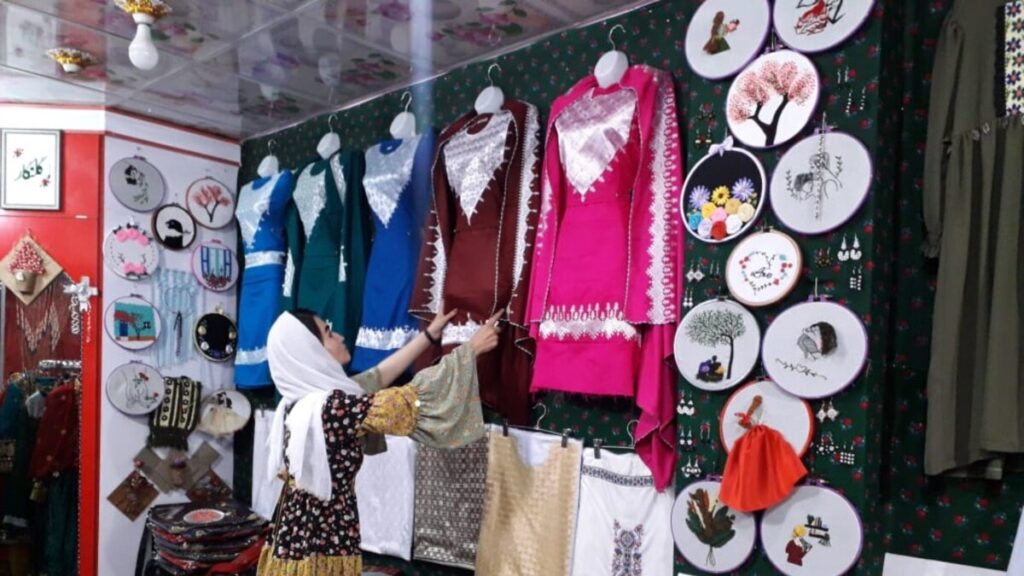Author: Mahdi Mozaffari
In today’s world, the role of women’s entrepreneurship in advancing the economic and social development of communities is undeniable. However, women in many traditional countries face numerous challenges compared to men when it comes to starting and financing their businesses.
This article examines the barriers to women’s success in entrepreneurship from various individual, cultural, economic, and social perspectives across different issues. Previous installments addressed employment and entrepreneurship issues for women from individual and cultural viewpoints. This issue focuses on the obstacles and challenges women face in accessing financial resources to start and develop their small and large businesses. We will delve deeper into these challenges and provide practical solutions to overcome them.
Challenges Women Face in Financing Businesses: Analyzing Barriers and Solutions
Some of the most significant economic barriers to successful women’s entrepreneurship include:
- Limited Access to Financial Resources:
One of the major obstacles for women in entrepreneurship is the lack of capital. This issue stems from various factors, including gender discrimination in loan approvals. Studies show that women face higher rates of loan rejections compared to men, and even when they do receive loans, their interest rates are significantly higher.
Additionally, women traditionally own less land and assets than men, which limits their ability to provide collateral for loans. This issue becomes particularly challenging in traditional communities where land ownership is predominantly held by men.
- Lack of Awareness of Available Resources:
Another problem is the lack of awareness among women about available financial resources. Many government and non-governmental support programs exist to assist female entrepreneurs, but information dissemination regarding these resources is often inadequate, leaving women unaware of their existence.
These challenges collectively create a landscape of inequality in access to financial resources for women entrepreneurs, posing significant barriers to the advancement and development of their businesses.
- Lack of Support for Childcare:
The second major economic factor affecting women’s employment and successful entrepreneurship is the issue of childcare. Childcare, especially for young children, can be very costly. Daycare fees can significantly impact a family’s budget, particularly for low-income or single-parent families. This situation can force women to make difficult choices between their jobs and caring for their children. Some mothers may have to leave their jobs or reduce their working hours to avoid paying for childcare and take care of their children themselves. This, of course, can negatively affect their income and financial independence.
Limited Access to Childcare: In many communities, especially in rural or underserved areas, finding quality and affordable childcare can be challenging. The lack of daycare centers and childcare facilities can pose challenges for working women who are seeking care for their children while they work. This can lead to a lengthy and costly search for suitable care and may also force women to rely on informal caregivers such as family members or friends, who may not always be reliable or qualified.
Lack of Supportive Childcare Policies: Many countries lack supportive childcare policies such as paid maternity leave and parental leave. This can make it difficult for women to return to work after childbirth or to care for sick children. The absence of such policies can disproportionately affect working women, especially those in low-wage jobs or without adequate job benefits.
Ultimately, the high costs of daycare, limited access to childcare, and the lack of supportive childcare policies all serve as barriers for working women around the world. Addressing these challenges through investment in quality and affordable childcare, providing paid leave policies, and supporting other supportive initiatives can offer women equal opportunities to participate in the workforce and reach their full potential.
Gender Wage Gap: A Persistent Injustice
The gender wage gap is a deep-rooted and unfair issue in which women, on average, earn less than men for performing similar work. This problem has numerous negative consequences for women’s lives and their families, hindering their economic and social advancement and equality.
Several factors contribute to the emergence of this gap. Gender discrimination is one of the most prominent factors. In many cases, women face unequal job opportunities compared to men due to their gender, are insufficiently represented at managerial levels, or receive lower wages for similar duties.
In addition to discrimination, the lack of career advancement opportunities also exacerbates this gap. Women often miss out on promotion and career progression opportunities due to family and social commitments. This not only prevents them from increasing their income but also affects their self-esteem and motivation.
The concentration of women in low-wage jobs is another factor that fuels the gender wage gap. Traditionally, women have worked in professions such as nursing, teaching, childcare, and other service jobs that offer lower pay. This situation, in turn, creates a cycle of poverty and inequality for women and their families.
The Necessity of Transparency in Wage Structures
Transparency in wage structures is a fundamental step toward addressing inequality and discrimination in the workplace. Unfortunately, women are often unaware of the wage structures at their workplaces. This lack of awareness can lead to exploitation and inadequate pay for their work.
Several factors play a role in this context. In some cases, employers intentionally avoid transparency regarding wages to evade fair payment to employees, particularly women. In other instances, the wage structure may be complex and unclear, making it difficult for women to understand.
Lack of transparency regarding wages has multiple negative consequences for women. It leads to women being unaware of the true value of their work and accepting lower pay. Additionally, it can foster a sense of injustice and dissatisfaction among female employees and create an environment ripe for exploitation.
To address this issue, employers must clearly communicate their wage structures to employees. This should include information about wage-setting criteria, promotion opportunities, salary increases, and benefits.
Moreover, governments should enact laws to ensure transparency regarding wages. These laws should require employers to provide accurate and clear information about wages to their employees and establish a mechanism for addressing complaints related to lack of transparency and discrimination in this area.
Transparency in wage structures plays a crucial role in creating fairness and equality in the workplace. By ensuring transparency, women can become aware of the true value of their work, receive fair compensation, and work in an environment free from discrimination and exploitation.













